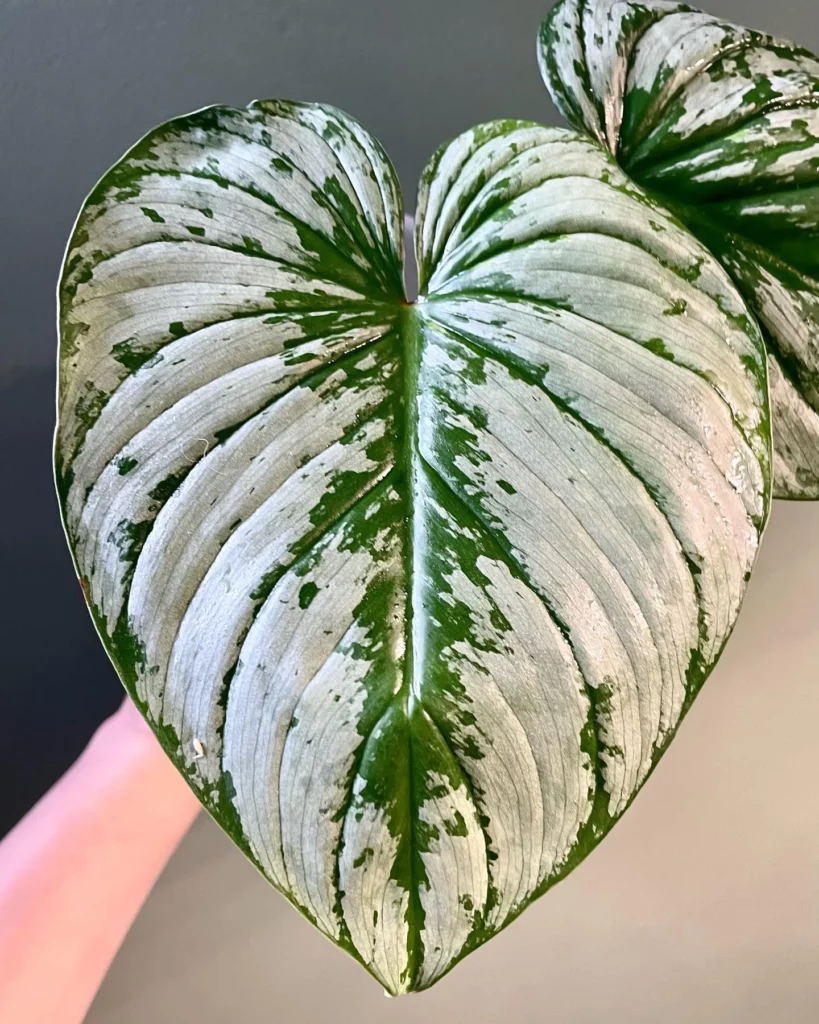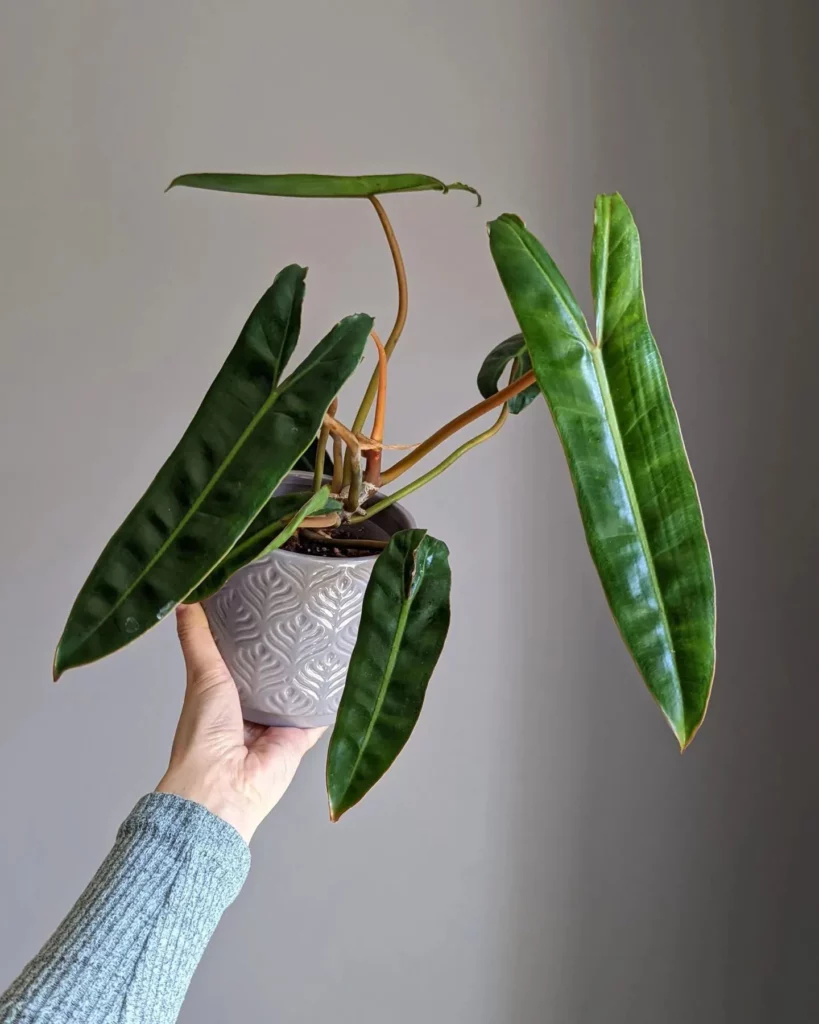Welcome to our guide on Philodendron Gigas care essentials. If you’re a plant enthusiast looking for a unique and rare houseplant to add to your collection, Philodendron Gigas is an excellent choice. Known for its huge, velvety leaves and impressive vining habit, this plant is sure to make a statement in any indoor space.
Key Takeaways:
- Philodendron Gigas is a rare and sought-after houseplant with huge, velvety leaves.
- It was first discovered in the rainforests of Panama in 1997.
- Philodendron Gigas thrives in bright indirect sunlight and requires between 10,000 and 20,000 lux of light.
- Philodendron Gigas is a fast-growing plant that can reach impressive heights of 8 to 10 feet indoors.
- Keep the plant out of reach of children and pets as it is toxic if ingested.
What’s Unique About Philodendron Gigas

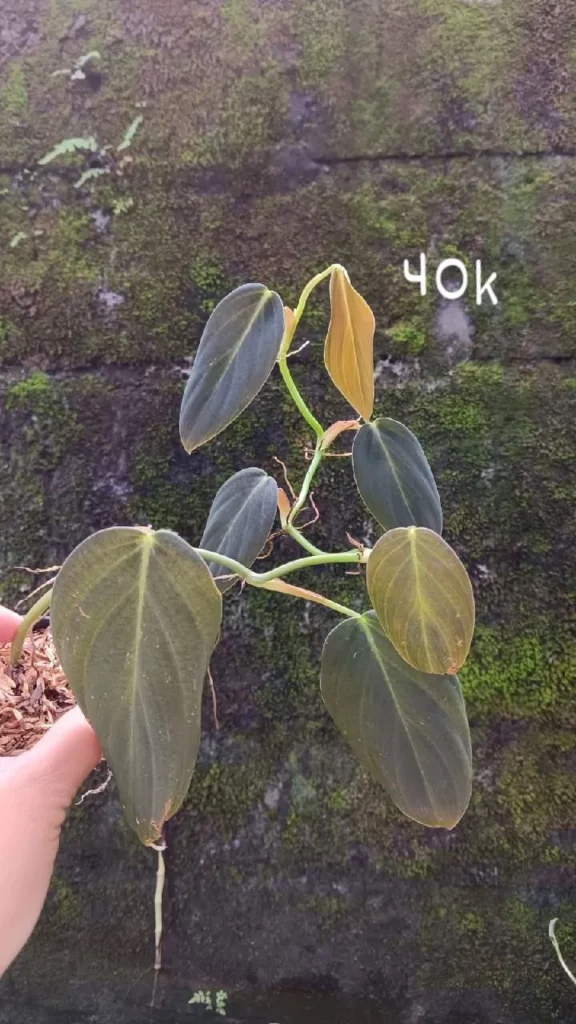
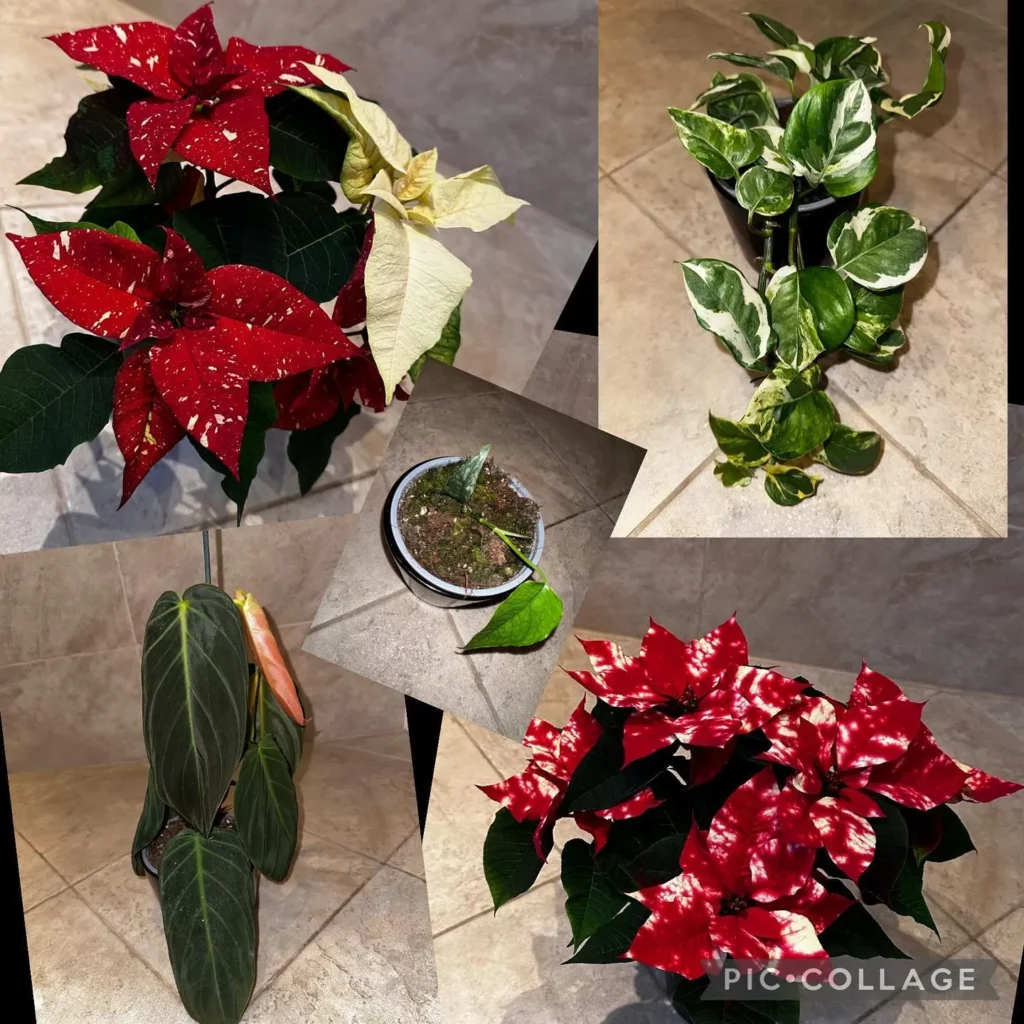
Philodendron Gigas is a rare and sought-after houseplant that stands out for its remarkable characteristics. Discovered in the rainforests of Panama in 1997, this unique and rare houseplant has captured the hearts of plant enthusiasts worldwide.
One of the most distinct features of Philodendron Gigas is its huge, velvety leaves. These deep green beauties are not only visually striking but also add a touch of elegance to any indoor space. The leaves of Philodendron Gigas can grow to be exceptionally large, offering a captivating presence to admirers.
In addition to its impressive leaves, Philodendron Gigas boasts an extensive vining habit, making it a perfect choice for those looking to create lush and eye-catching displays. Whether cascading from hanging baskets or climbing trellises, this rare houseplant adds a touch of natural artistry to any interior.
What makes Philodendron Gigas even more remarkable is its ability to remove formaldehyde from the air. As formaldehyde is a common indoor air pollutant found in various household items, having a Philodendron Gigas can contribute to cleaner and healthier indoor air quality.
Philodendron Gigas Appearance


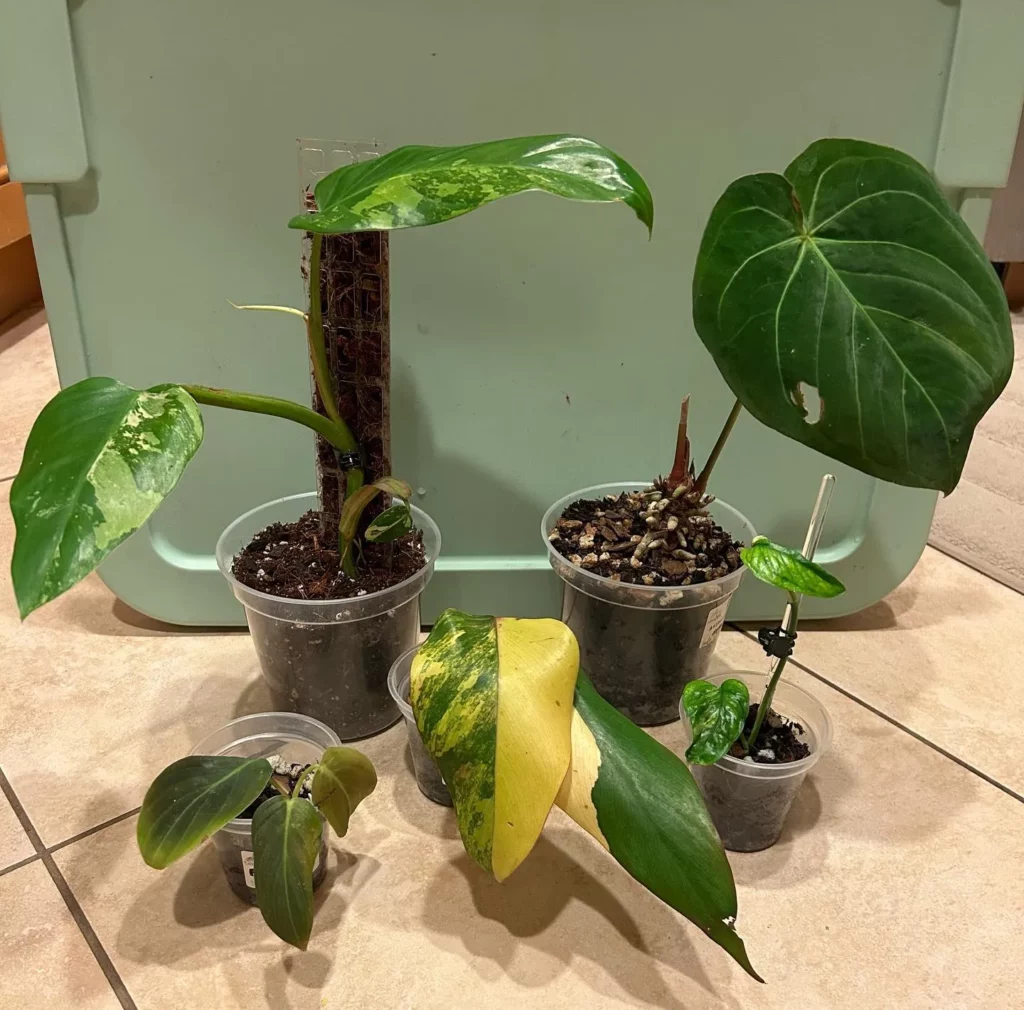
Philodendron Gigas is a stunning houseplant with distinct features that set it apart from other plants. Its large, oval-shaped leaves are a deep green color and have a velvety texture, making them incredibly pleasing to the touch. The leaves also exhibit striking light yellow-green midribs and veins, adding a beautiful contrast to the overall appearance of the plant.
One of the most impressive aspects of Philodendron Gigas is its size. The leaves can grow up to an impressive 1 foot in length, creating a dramatic and eye-catching display. Despite its size, this plant is a climber and can thrive even when cultivated indoors. As it grows, it can reach remarkable heights, adding a touch of grandeur to any space it occupies.
Whether you place it in a living room, bedroom, or office, Philodendron Gigas is sure to become a statement piece within your indoor plant collection. Its lush foliage and distinctive appearance will bring a sense of elegance and natural beauty to any environment.
Philodendron Gigas Light Requirements
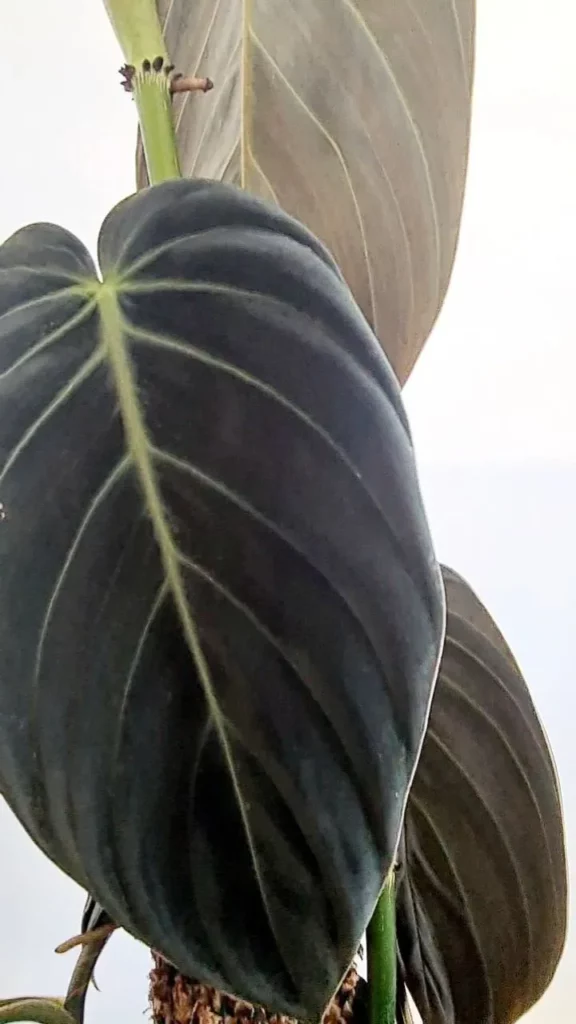

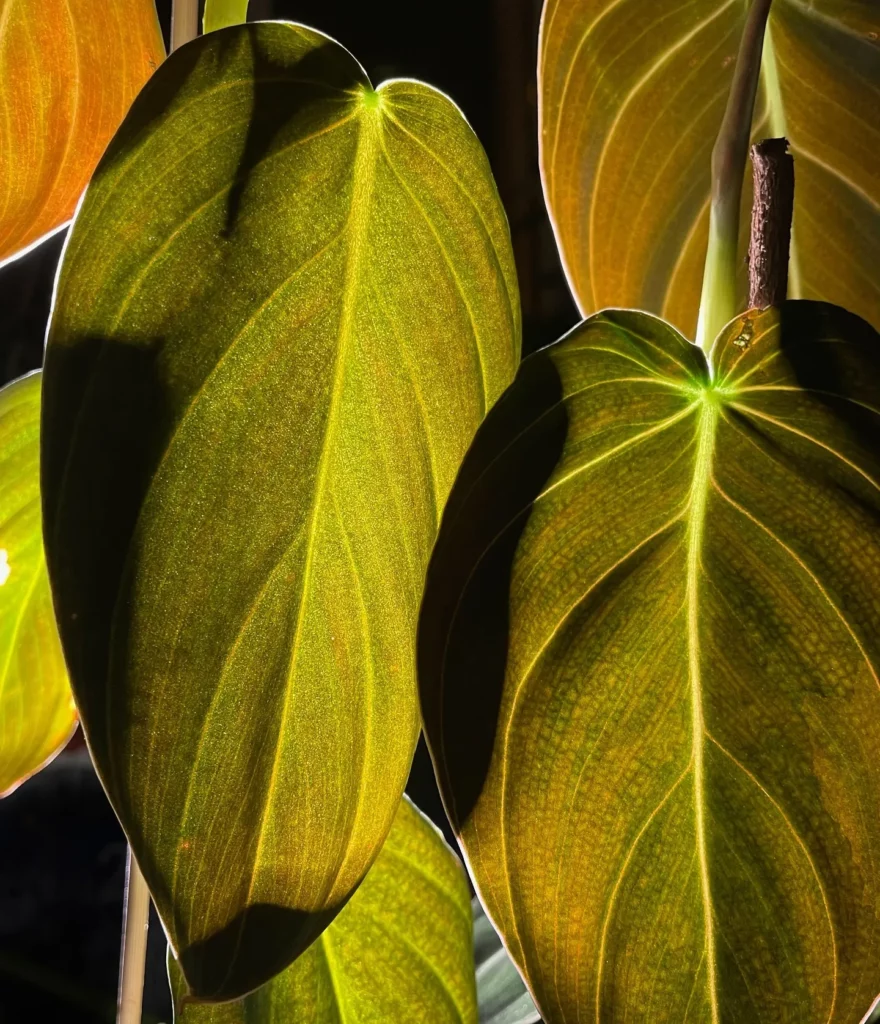
Philodendron Gigas, a stunning houseplant with large velvety leaves, thrives in bright indirect sunlight. To ensure optimal growth, it requires a light intensity between 10,000 and 20,000 lux. While it can tolerate lower light levels, it will not thrive in full shade or direct sunlight. When placing your Philodendron Gigas, choose a bright location that is away from direct sun exposure.
Philodendron Gigas Watering
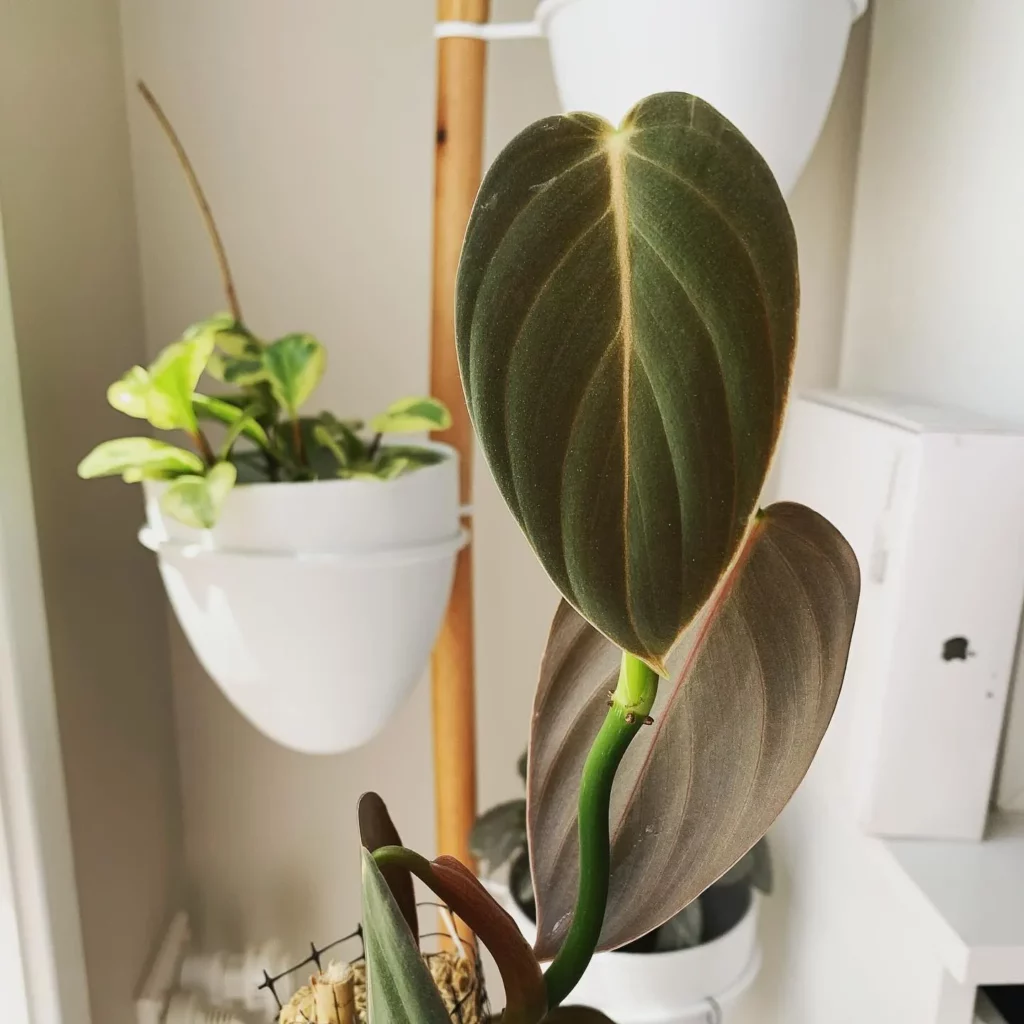
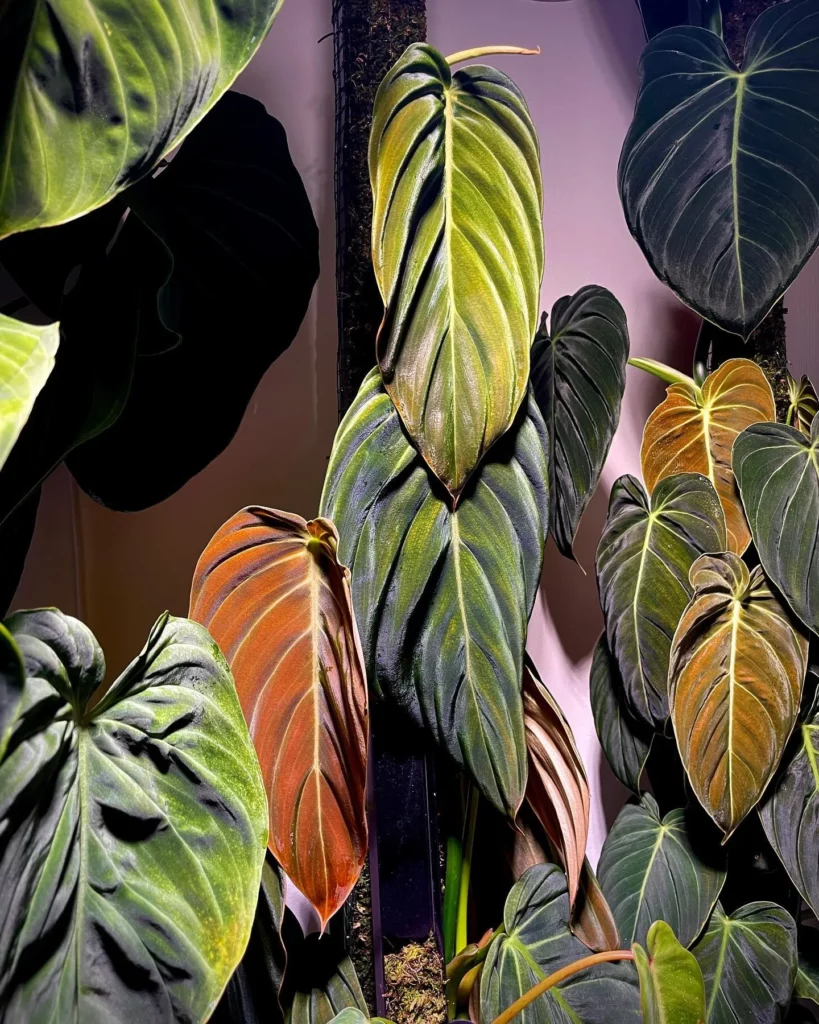
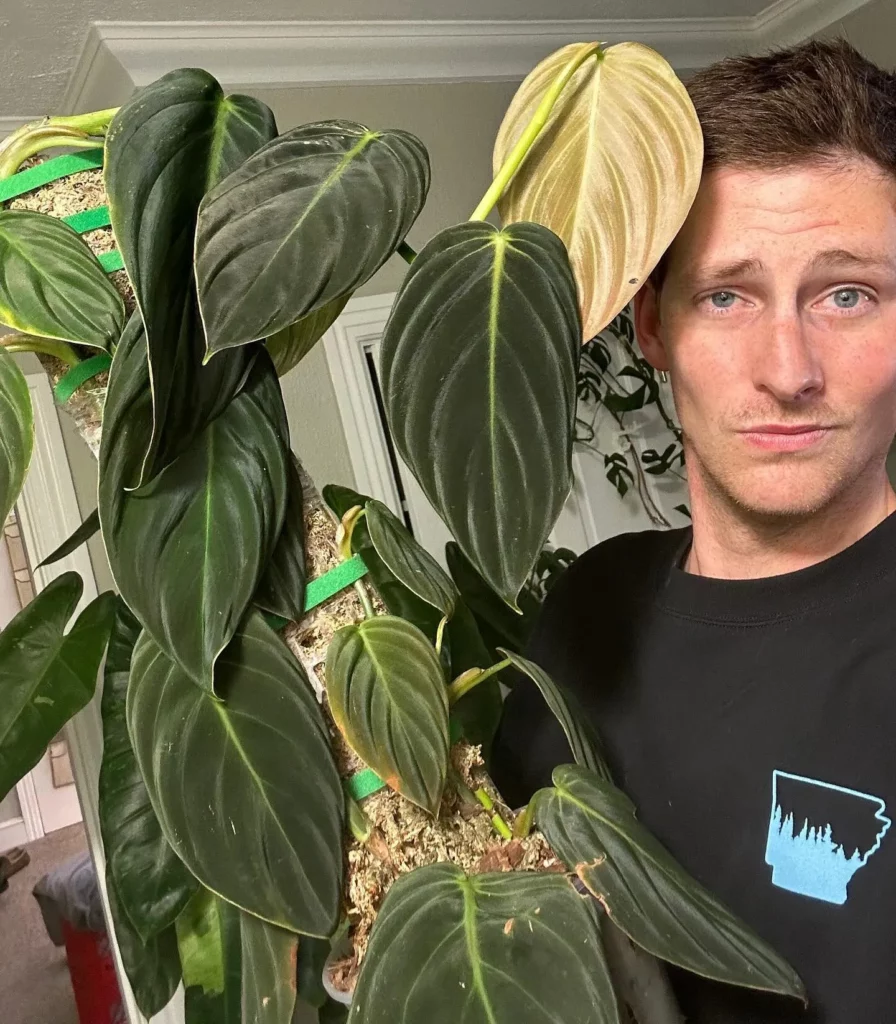
Proper watering is crucial for the health and well-being of your Philodendron Gigas. To ensure optimal growth and prevent issues such as root rot, it’s essential to follow the right watering practices.
When it comes to watering your Philodendron Gigas, a general rule of thumb is to water the plant when the top 2 inches of soil feel dry to the touch. This allows you to gauge the moisture level and prevent overwatering.
During the growing season, which is typically spring and summer, you’ll want to water your Philodendron Gigas regularly. This helps to support its active growth and keeps the soil evenly moist. However, it’s important not to let the plant sit in standing water, as this can lead to root rot.
In winter, the plant enters a dormant period, and its water needs decrease. Reduce your watering frequency and allow the soil to dry out more between waterings. This helps prevent moisture-related issues in the colder months.
When watering, make sure to provide good drainage. Philodendron Gigas prefers a well-draining potting mix that allows excess water to escape easily. Ensure that the pot has drainage holes and avoid using pots with saucers or trays that can trap water.
Philodendron Gigas Fertilizing

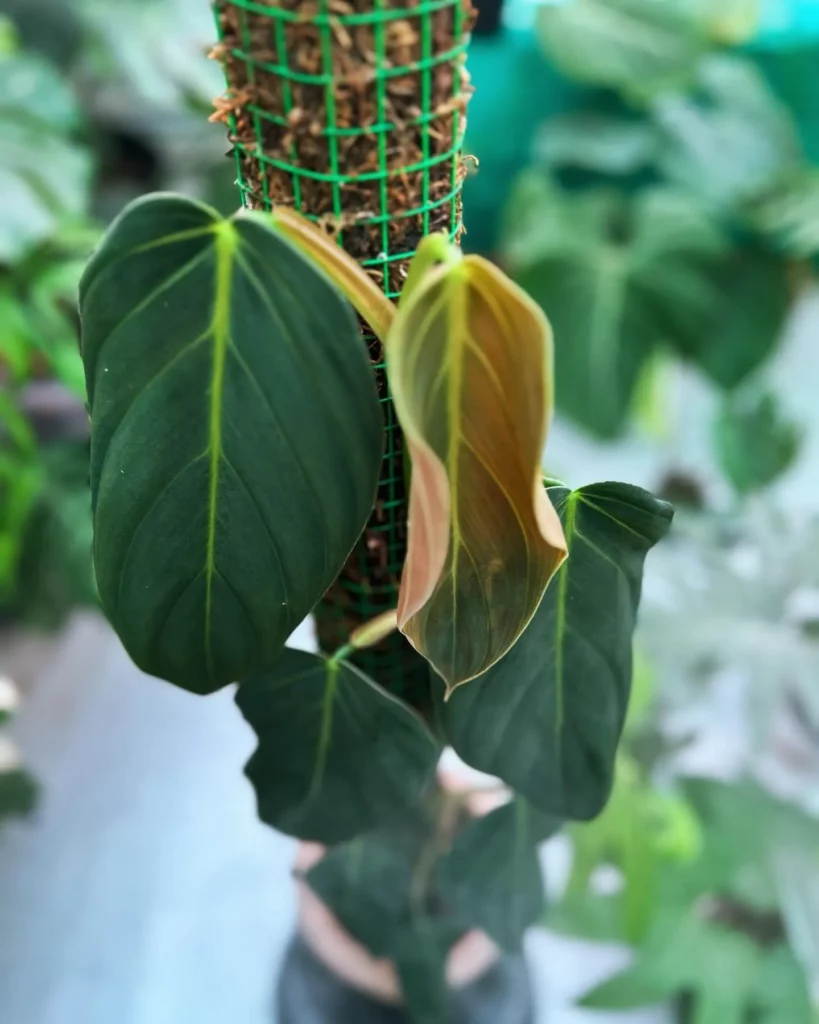

Proper fertilizing is crucial for the healthy growth of your Philodendron Gigas. During the spring and summer months, fertilize your plant once or twice a month to provide it with the necessary nutrients.
You can use a balanced liquid fertilizer or choose a fertilizer with a ratio of 3:1:2 to ensure a well-rounded nutrient mix. It’s important to dilute the fertilizer to half the recommended strength to avoid overfeeding your plant.
When applying the fertilizer, do so after watering your Philodendron Gigas. This helps prevent any potential damage to the roots and ensures that the nutrients are evenly distributed. Apply the fertilizer to the soil surface and avoid direct contact with the leaves.
Philodendron Gigas Potting

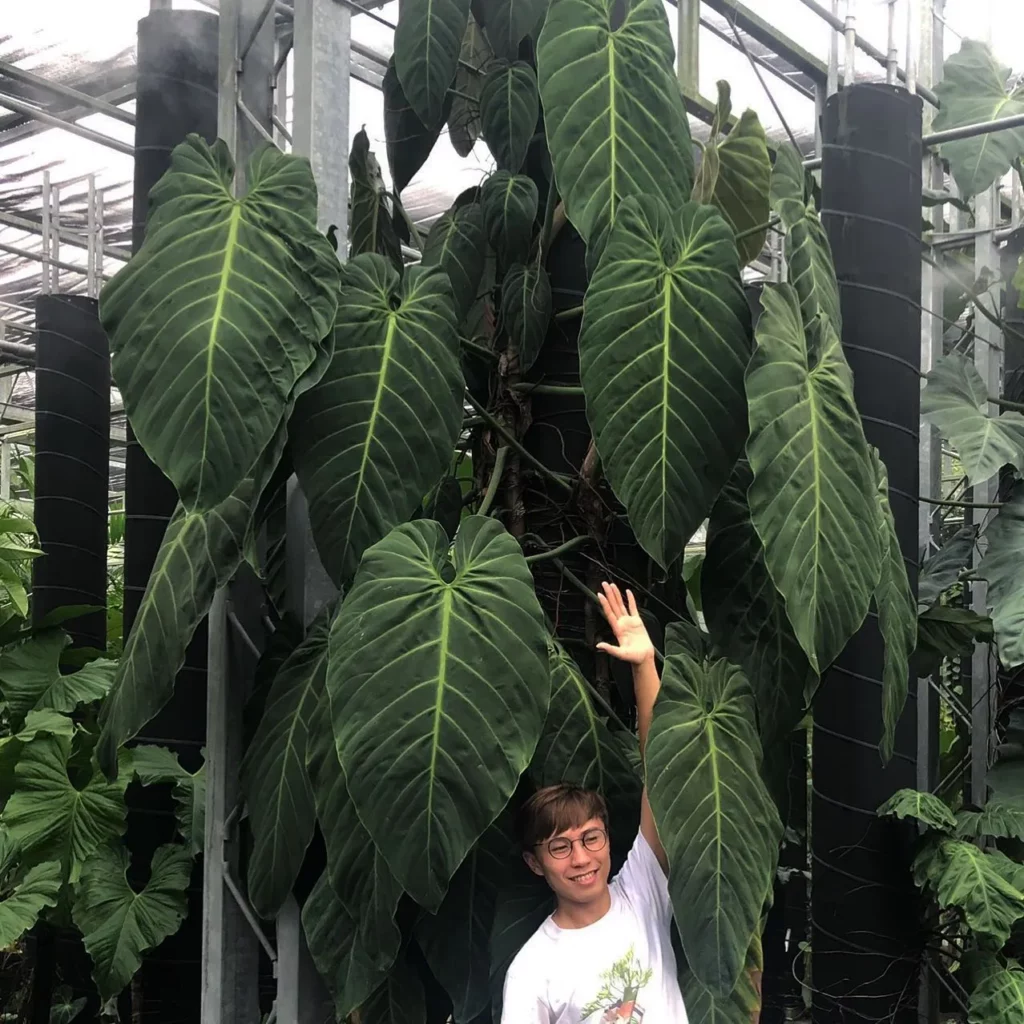
When it comes to potting your Philodendron Gigas, it’s important to keep a few things in mind. Repotting should be done once a year, preferably during the early spring. Choose a pot that is only slightly larger than the current one to prevent overgrowth.
Good drainage is essential for the overall health of your Philodendron Gigas. Make sure to use a potting mix that is rich, quick-draining, and loamy. This will help prevent any waterlogging and ensure that your plant receives the right amount of moisture.
It’s worth noting that Philodendron Gigas doesn’t mind being slightly rootbound. So, when repotting, you don’t need to go up by more than a few inches in diameter. This will help maintain a compact and healthy root system.
Philodendron Gigas Propagation
If you want to expand your collection of Philodendron Gigas plants, propagation is a great option. There are two common methods you can use: stem cuttings and layering.
To propagate with stem cuttings, start by selecting a young stem with a few leaves and at least one node. Nodes are the points on a stem where leaves emerge. Remove the lower leaves to expose the node. This is where the roots will develop. Place the cutting in water or damp soil, ensuring that the node is submerged, and wait for the roots to grow. Once the roots have developed, you can transfer the cutting to a pot with well-draining soil.
Another way to propagate Philodendron Gigas is through layering. For this method, select a healthy stem and gently bend it down towards the soil. Ensure that a part of the stem is in contact with the soil. You can use a small stake to hold the stem in place. Over time, roots will start to grow from the stem where it meets the soil. Once the roots have formed, you can cut the stem from the mother plant and transplant it into a new pot.
Philodendron Gigas Growth and Development
Philodendron Gigas is a fast-growing plant that can reach impressive heights. When grown as a houseplant, it can reach a height of 8 to 10 feet, adding a touch of grandeur to any indoor space. The leaves of Philodendron Gigas are equally impressive, growing up to 1 foot long. As the plant matures, the leaves develop into a deep green color, creating a stunning visual display in your home or office.
Although Philodendron Gigas is known for its large and lush leaves, it rarely flowers when grown indoors. The focus of this plant’s growth is primarily on foliage development, and it is the stunning leaves that contribute to its unique beauty and appeal.
Philodendron Gigas Pests and Diseases
While Philodendron Gigas is known for its resistance to pests, it is not entirely immune. There are a few common pests that may still pose a threat to your plant’s health: aphids and scale insects. Regularly inspect the leaves of your Philodendron Gigas for any signs of infestation, such as tiny insects, sticky residue, or stunted growth.
If you notice any signs of pests, take immediate action to control them. You can try spraying the affected leaves with a mixture of water and mild soap or using organic insecticidal sprays specifically designed for indoor plants.
In addition to pests, overwatering can also lead to problems for your Philodendron Gigas. Excess moisture in the soil can cause root rot and encourage the growth of fungal diseases. To prevent these issues, ensure that your plant is placed in a well-draining pot and that any excess water is promptly drained away.
Philodendron Gigas Toxicity
Philodendron Gigas, a stunning houseplant with its large, velvety leaves, brings an air of beauty to any space. However, it’s important to remember that this captivating plant is toxic to humans and pets if ingested.
The toxicity of Philodendron Gigas is due to the presence of calcium oxalate crystals. These crystals can cause skin irritation and burning sensations when they come into contact with the skin. Additionally, if consumed in large amounts, Philodendron Gigas can lead to gastrointestinal symptoms.
To ensure the safety of your loved ones, it is crucial to keep Philodendron Gigas out of reach of children and pets. If you come into contact with the plant, wash your hands thoroughly afterward. By taking these precautions, you can enjoy the beauty of Philodendron Gigas while keeping your loved ones safe and sound.
FAQ
How often should I water my Philodendron Gigas?
Water your Philodendron Gigas when the top 2 inches of soil are dry. During the growing season, water the plant regularly. In winter, reduce watering and allow the soil to dry out more between waterings. Avoid overwatering and ensure good drainage to prevent root rot.
How often should I fertilize my Philodendron Gigas?
Fertilize your Philodendron Gigas once or twice a month during the spring and summer months. Use a balanced liquid fertilizer or a fertilizer with a ratio of 3:1:2. Dilute the fertilizer to half the recommended strength and apply it to the soil surface after watering. Do not fertilize in the fall and winter when the plant is dormant.
How often should I repot my Philodendron Gigas?
Repot your Philodendron Gigas once a year in early spring. Use a pot that is only slightly larger than the current one. Ensure good drainage with a potting mix that is rich, quick-draining, and loamy. Philodendron Gigas doesn’t mind being slightly rootbound, so only go up by a few inches in diameter when repotting.
How can I propagate my Philodendron Gigas?
Philodendron Gigas can be propagated through stem cuttings or layering. To propagate with stem cuttings, take a young stem with a few leaves and at least one node. Remove lower leaves and place the cutting in water or damp soil until roots develop. For layering, pin down a stem to the soil and wait for roots to form before separating it from the mother plant.
How tall can a Philodendron Gigas grow?
Philodendron Gigas is a fast-growing plant that can reach impressive heights. It can grow up to 8 to 10 feet as a houseplant.
Is Philodendron Gigas resistant to pests?
Philodendron Gigas is relatively resistant to pests. However, it may still be susceptible to aphids and scale insects. Regularly check the leaves for any signs of infestation and take necessary measures to control the pests. Additionally, overwatering can lead to root rot and fungal diseases. Ensure good drainage and avoid overwatering to prevent these issues.
Is Philodendron Gigas toxic to humans and pets?
Yes, Philodendron Gigas is toxic to humans and pets if ingested. It contains calcium oxalate crystals that can cause skin irritation, burning, and gastrointestinal symptoms when consumed in large amounts. Keep the plant out of reach of children and pets and wash hands after handling.



